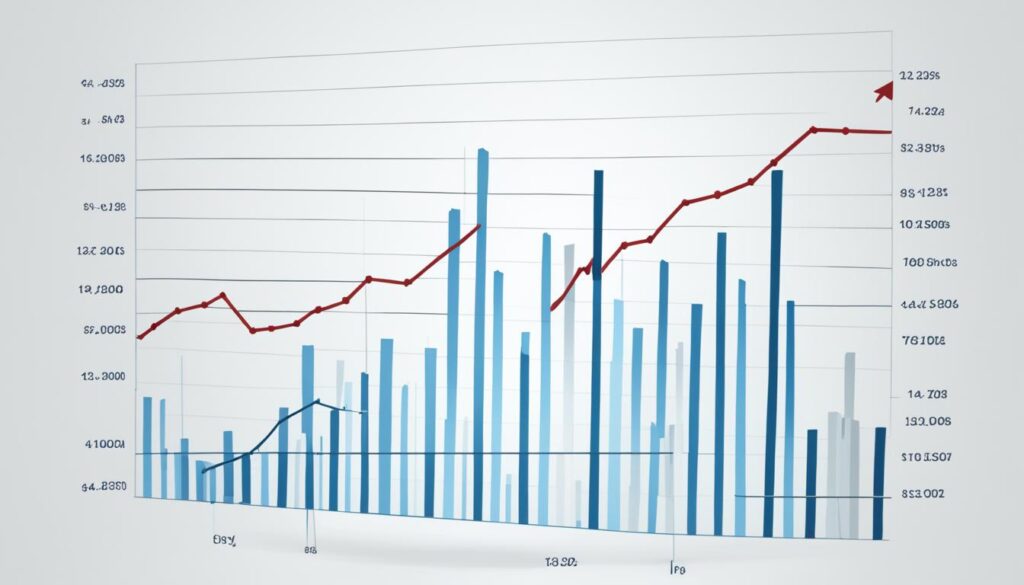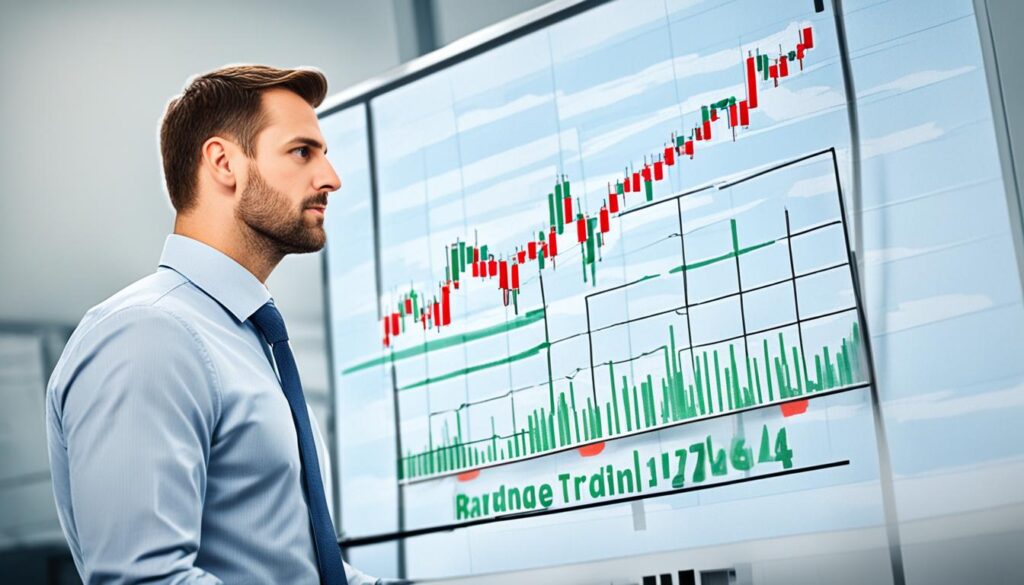As an experienced trader, I understand the importance of having a solid set of strategies when it comes to CFD trading. Contracts for Difference trading, commonly known as CFD trading, is a popular method of speculating on the price movements of various financial markets without actually owning the underlying asset. To excel in this type of trading, it is essential to arm yourself with proven strategies that can help you navigate the markets effectively and make informed investment decisions.
In this article, I will be sharing some of the most effective strategies that have been tested and proven to be successful in CFD trading. By implementing these strategies, you can enhance your investment acumen and increase your chances of achieving success in the dynamic world of CFD trading. Whether you are a beginner or an experienced trader, these strategies can be valuable tools in your trading arsenal.
Key Takeaways:
- CFD trading involves speculating on price movements without owning the underlying asset.
- Proven strategies in CFD trading can help enhance your investment acumen.
- Two popular strategies are the trend-following strategy and the range trading strategy.
- Technical analysis indicators, such as moving averages, are used in trend following.
- Range trading focuses on buying at the lower end of a range and selling at the upper end.
Trend Following Strategy in CFD Trading
One of the proven strategies in CFD trading is the trend following strategy. This strategy involves identifying and trading in the direction of the prevailing trend in the market. Traders who use this strategy rely on technical analysis indicators, such as moving averages, to identify trends and make trading decisions.
Trend following is based on the belief that trends tend to continue and that traders can profit by entering trades in the direction of the trend. By following the trend, traders aim to capture the majority of the price movement and maximize their profits.
Technical analysis indicators, such as moving averages, play a crucial role in implementing the trend following strategy. Moving averages help traders filter out short-term price fluctuations and focus on the broader trend. Traders often use different timeframes for moving averages to identify both short-term and long-term trends.
For example, a trader using a trend following strategy may look for situations where the price of an asset is consistently trading above its long-term moving average, indicating an uptrend. Conversely, if the price is consistently trading below the long-term moving average, it may be a sign of a downtrend.
By combining multiple moving averages with different timeframes, traders can confirm the strength of the trend and make informed trading decisions. The crossover of two moving averages of different timeframes, such as the 50-day moving average and the 200-day moving average, is a popular trend-following signal.
In summary, the trend following strategy is a time-tested approach in CFD trading that aims to capture the momentum of price movements. Traders using this strategy rely on technical analysis indicators, such as moving averages, to identify trends and make informed trading decisions. By aligning their trades with the prevailing trend, traders can increase their chances of success in CFD trading.

Range Trading Strategy in CFD Trading
In CFD trading, there is a wide range of strategies available to investors. One such strategy that has proven to be effective is the range trading strategy. This strategy is particularly useful when the market is trading in a sideways or range-bound manner.
When employing the range trading strategy, traders aim to buy at the lower end of the range and sell at the upper end. The key to successful implementation lies in identifying and utilizing support and resistance levels.
Support levels are price levels at which there is historically strong buying interest, causing the price to bounce back up. Resistance levels, on the other hand, are price levels at which there is historically strong selling interest, causing the price to drop.
By carefully monitoring the support and resistance levels, traders can identify the range within which the price is moving. They can then enter long positions near the support level and exit near the resistance level. Conversely, they can enter short positions near the resistance level and exit near the support level.
Implementing the range trading strategy requires patience and discipline. Traders must closely monitor the price action and be ready to enter and exit positions based on the established range. Additionally, it is crucial to set stop-loss orders to limit potential losses if the price breaks out of the range.
It is important to note that range trading may not be suitable in highly volatile market conditions or during significant news events that can trigger sharp price movements. Therefore, it is advisable to use this strategy when the market is relatively stable and lacking a clear trend.
Overall, the range trading strategy in CFD trading can be a valuable tool in generating profits in range-bound markets. By identifying support and resistance levels and executing disciplined trades, traders can take advantage of price movements within the established range.
Now let’s take a look at the following table that illustrates an example of a range trading strategy in action:
| Date | Support Level | Resistance Level | Trade Action |
|---|---|---|---|
| January 1 | $100 | $110 | Buy |
| January 10 | $100 | $110 | Exit |
| January 15 | $90 | $100 | Sell |
| January 20 | $90 | $100 | Exit |
In this example, the trader identified a range between $100 and $110. On January 1, they entered a long position (buy) near the support level of $100. After the price reached the resistance level of $110 on January 10, they exited the trade, locking in profits. Later, on January 15, as the price dropped back towards the support level, the trader entered a short position (sell). Finally, on January 20, they exited the trade once the price reached the support level again.
Remember, successful range trading requires careful analysis, effective risk management, and adherence to the established trading plan. By mastering the range trading strategy, you can enhance your CFD trading skills and potentially increase your profitability.

Conclusion
In conclusion, mastering CFD trading requires the use of proven strategies that can help enhance your investment acumen. By incorporating effective strategies, you can navigate the complexities of CFD trading and increase your chances of success.
Trend following, one of the proven strategies in CFD trading, allows traders to identify and trade in the direction of prevailing trends. By using technical analysis indicators like moving averages, traders can make informed decisions based on market trends.
Another effective strategy is range trading, which is employed when the market is moving sideways or within a specific range. Traders using this strategy aim to buy at the lower end of the range and sell at the upper end, taking advantage of price fluctuations within the range.
Additionally, breakout trading and news trading are other proven strategies that can be utilized to capitalize on market movements. Breakout trading involves identifying key levels of support and resistance and entering trades when the price breaks out of these levels. News trading, on the other hand, entails taking advantage of market volatility caused by significant news events.
By incorporating these proven CFD trading strategies, you can enhance your investment acumen and make more informed trading decisions. Remember to backtest and refine these strategies to suit your trading style and risk tolerance. With practice and discipline, you can navigate the CFD markets with confidence and increase your chances of success.
FAQ
What is CFD trading?
CFD trading, or Contracts for Difference trading, is a popular way to speculate on the price movements of various financial markets without actually owning the underlying asset.
Why is it important to have proven strategies in CFD trading?
Having proven strategies can help navigate the markets and enhance your investment acumen in CFD trading.
What is the trend following strategy in CFD trading?
The trend following strategy involves identifying and trading in the direction of the prevailing trend in the market. Traders who use this strategy rely on technical analysis indicators, such as moving averages, to identify trends and make trading decisions.
How does the range trading strategy work in CFD trading?
The range trading strategy is employed when the market is trading in a sideways or range-bound manner. Traders who use this strategy aim to buy at the lower end of the range and sell at the upper end.
Are there other proven strategies in CFD trading?
Yes, in addition to the trend following and range trading strategies, other proven strategies in CFD trading include breakout trading and news trading.
Are these strategies effective in navigating the markets?
Yes, these proven strategies have been shown to be effective in navigating the markets and improving your trading success in CFD trading.
Source Links
Disclaimer
All information on this website is of a general nature. The information is not adapted to conditions that are specific to your person or entity. The information provided can not be considered as personal, professional or legal advice or investment advice to the user.
This website and all information is intended for educational purposes only and does not give financial advice. Signal Mastermind Signals is not a service to provide legal and financial advice; any information provided here is only the personal opinion of the author (not advice or financial advice in any sense, and in the sense of any act, ordinance or law of any country) and must not be used for financial activities. Signal Mastermind Signals does not offer, operate or provide financial, brokerage, commercial or investment services and is not a financial advisor. Rather, Signal Mastermind Signals is an educational site and a platform for exchanging Forex information. Whenever information is disclosed, whether express or implied, about profit or revenue, it is not a guarantee. No method or trading system ensures that it will generate a profit, so always remember that trade can lead to a loss. Trading responsibility, whether resulting in profits or losses, is yours and you must agree not to hold Signal Mastermind Signals or other information providers that are responsible in any way whatsoever. The use of the system means that the user accepts Disclaimer and Terms of Use.
Signal Mastermind Signals is not represented as a registered investment consultant or brokerage dealer nor offers to buy or sell any of the financial instruments mentioned in the service offered.
While Signal Mastermind Signals believes that the content provided is accurate, there are no explicit or implied warranties of accuracy. The information provided is believed to be reliable; Signal Mastermind Signals does not guarantee the accuracy or completeness of the information provided. Third parties refer to Signal Mastermind Signals to provide technology and information if a third party fails, and then there is a risk that the information may be delayed or not delivered at all.
All information and comments contained on this website, including but not limited to, opinions, analyzes, news, prices, research, and general, do not constitute investment advice or an invitation to buy or sell any type of instrument. Signal Mastermind Signals assumes no responsibility for any loss or damage that may result, directly or indirectly, from the use or dependence on such information.
All information contained on this web site is a personal opinion or belief of the author. None of these data is a recommendation or financial advice in any sense, also within the meaning of any commercial act or law. Writers, publishers and affiliates of Signal Mastermind Signals are not responsible for your trading in any way.
The information and opinions contained in the site are provided for information only and for educational reasons, should never be considered as direct or indirect advice to open a trading account and / or invest money in Forex trading with any Forex company . Signal Mastermind Signals assumes no responsibility for any decisions taken by the user to create a merchant account with any of the brokers listed on this website. Anyone who decides to set up a trading account or use the services, free of charge or paid, to any of the Broker companies mentioned on this website, bears full responsibility for their actions.
Any institution that offers a service and is listed on this website, including forex brokers, financial companies and other institutions, is present only for informational purposes. All ratings, ratings, banners, reviews, or other information found for any of the above-mentioned institutions are provided in a strictly objective manner and according to the best possible reflection of the materials on the official website of the company.
Forex/CFD trading is potentially high risk and may not be suitable for all investors. The high level of leverage can work both for and against traders. Before each Forex/CFD investment, you should carefully consider your goals, past experience and risk level. The opinions and data contained on this site should not be considered as suggestions or advice for the sale or purchase of currency or other instruments. Past results do not show or guarantee future results.
Neither Signal Mastermind Signals nor its affiliates ensure the accuracy of the content provided on this Site. You explicitly agree that viewing, visiting or using this website is at your own risk.


